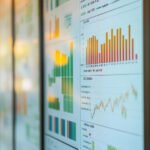Introduction: What is The Course Syllabus of Data Analyst Course?
Zennemis – When considering a career as a data analyst, understanding the course syllabus is crucial to ensure comprehensive learning. A well-structured syllabus provides a clear roadmap of the topics and skills that will be covered throughout the course. Typically, the syllabus begins with the basics of data analysis, including fundamental concepts and tools like Excel and SQL. As the course progresses, students dive deeper into data visualization, statistical analysis, and programming languages such as Python and R. Moreover, the syllabus often includes real-world applications, offering students the opportunity to work on projects that mimic industry scenarios. By following a structured syllabus, students gain the knowledge needed to succeed as data analysts in today’s data-driven world.
A well-organized data analyst training syllabus covers a wide range of topics that are important for data analysis. This gives students the knowledge they need to gather, analyze, and make sense of data. Here is a full list of all the important topics that should be covered in a good data analyst course:
1. Business Analytics Using Excel
Excel is an important tool for data analysis because it has features that let users clean, change, and display data. What the course usually covers:
- Cleaning up and preparing data
- Stats that describe
- Making sense of data with charts and dashboards
- Excel has more advanced features, such as Goal Seek and pivot tables.
- An introduction to Power BI for making reports that change over time
2. SQL Fundamentals
A very popular query language is Structured Query Language (SQL). It is very important in data analytics because it lets people handle databases and get data quickly and easily. This lesson is mostly about:
- SQL basics (SELECT, INSERT, UPDATE, and DELETE)
- Ideas for database handling
- Joins, subqueries, and other advanced SQL methods make it easy to get data.
3. Python for Data Analytics
A good training syllabus for a data analyst should include languages like Python, which data science and analytics professionals often use because it can perform many different tasks, along with libraries like
- Pandas lets you change data.
- Visualization with Seaborn and Matplotlib
- A look at machine learning with Scikit-learn
- Automating the flow of data
4. R Programming
A lot of people who work with data also use the computer language R. It’s used for
- Changing data and making statistical models
- Using R tools like ggplot2 to show data
- How to use machine learning in R 5 Using Tableau to Show Data
5. Tableau for Data Visualization
Tableau is a leading tool for creating interactive visualizations. The course includes:
- Reports and dashboards that you can work with
- Combining data and making images your own
- Reports and pictures are shared.
6. Power BI
Power BI is a business intelligence tool made by Microsoft. It’s mostly about:
- Making dashboards and reports that you can work with
- Using Power BI’s advanced tools to model and analyze data
- Reporting and sharing with others through Microsoft Teams
7. Statistics and Probability
This section covers the fundamentals of statistical methods, including:
- Stats that describe (mean, median, mode)
- Distributions of probabilities
- Tests of hypotheses and regression analysis
- Techniques for sampling and cleaning up data
8. Data Structures and Algorithms
You need to know how data models work in order to work with data well. Here are some topics:
- A great deal of trees, lists, and groups
- How to search and sort things
- Key-value stores and bit trees
9) Capstone Project
Students learn how to be data analysts, and the final project is an important part of their training because it lets them:
- Put what they’ve learned to use to fix data problems in the real world.
- Gather data, analyze it, and show the results of your full data analysis project.
- Better skills and tools
Additional Skills and Tools
- Machine Learning: Basic introduction to algorithms like linear regression and decision trees
- Text Analytics: Processing unstructured data and performing sentiment analysis
- Data Collection: Techniques for gathering and managing large datasets from various sources
The above-discussed syllabus is well-rounded as it covers all the essential skills and tools needed to succeed in data analysis. However, there are several other aspects you need to keep in mind when choosing a data analyst course. Let’s have a look at that next.
Conclusion: What is The Course Syllabus of Data Analyst Course?
In conclusion, a well-designed data analyst course syllabus provides comprehensive coverage of essential skills and tools. Starting with foundational topics such as Excel and SQL, the course gradually progresses to more advanced areas like Python, R, and data visualization tools like Tableau and Power BI. Additionally, it includes statistical methods, machine learning, and real-world applications through capstone projects. By offering both technical and practical knowledge, the syllabus ensures that students are well-prepared for a successful career in data analysis. Ultimately, a structured syllabus equips students with the expertise needed to excel in today’s data-driven world.




